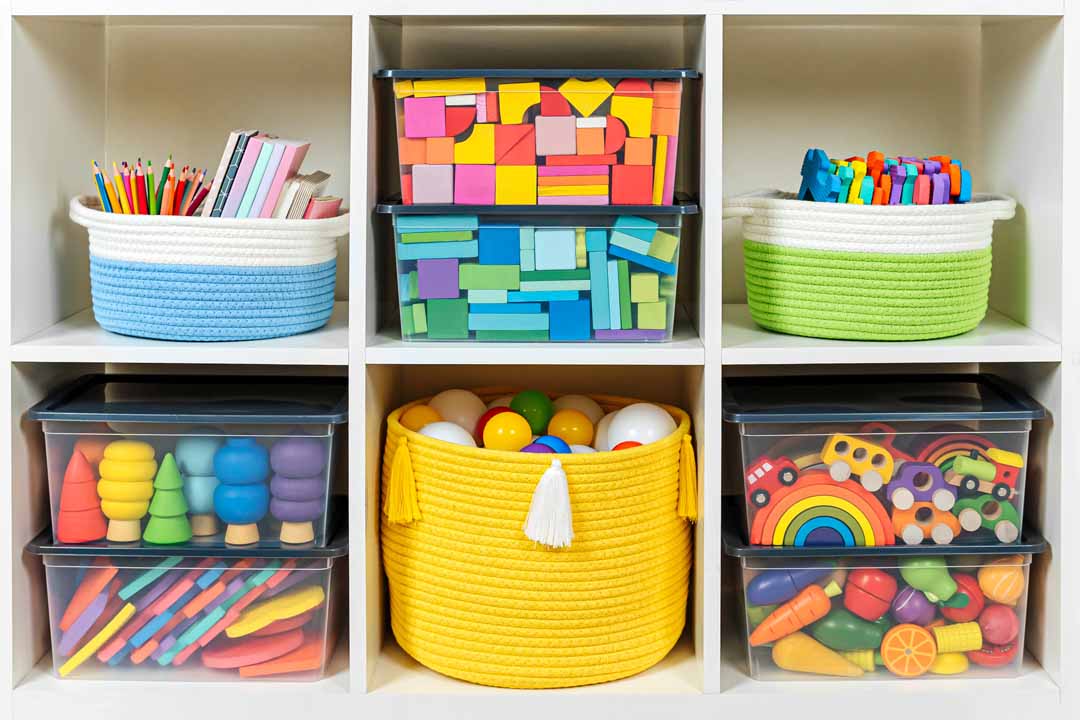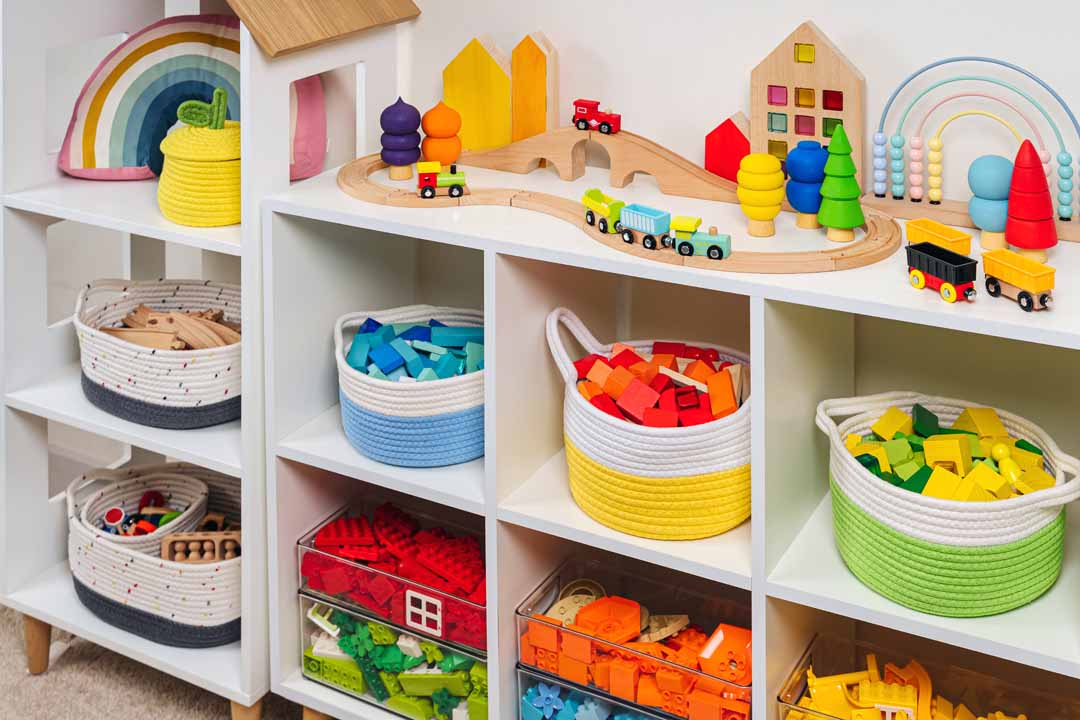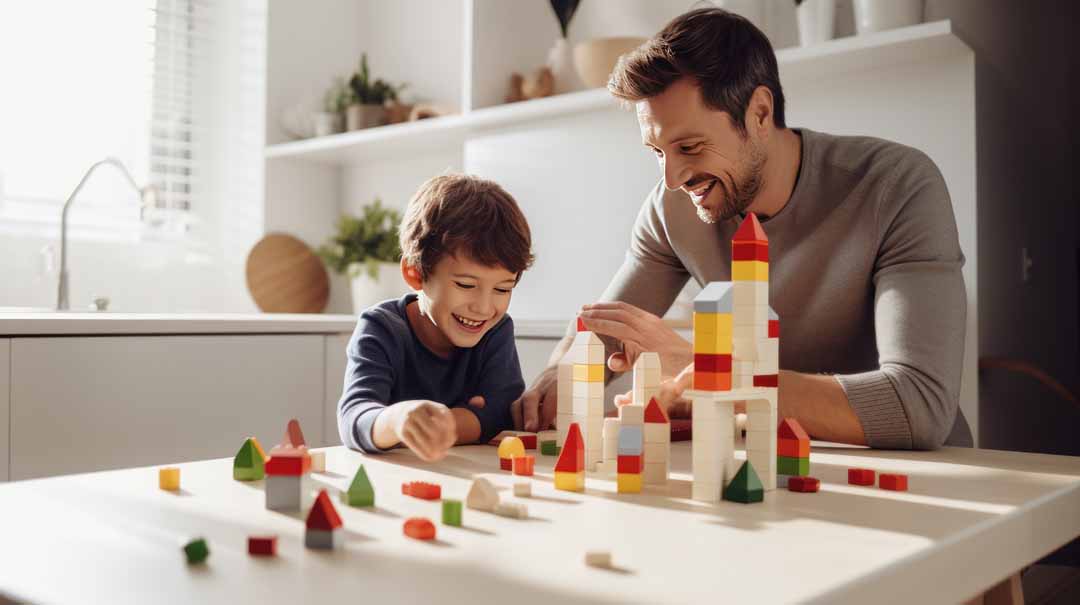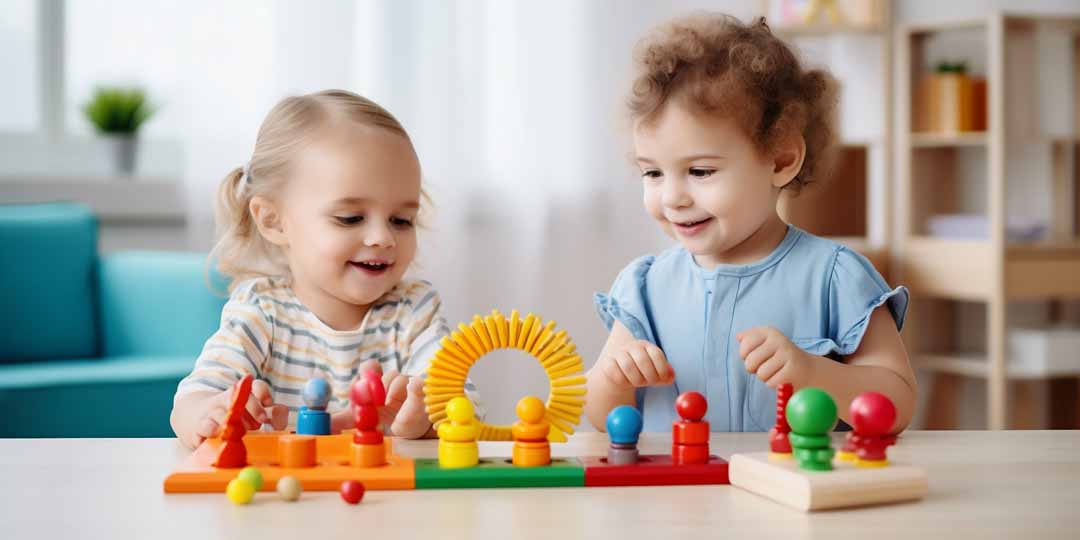

In the whirlwind that is parenting, managing the ever-growing mountain of toys can be a daunting task. Every parent has experienced the frustration of one living space or another full to the brim of toys that seem to constantly multiply. Enter the game-changer: toy rotation. This simple yet effective strategy not only keeps the play area organised but subsequently unlocks an array of benefits for your child’s development.
In this blog, we’ll explore the magic behind toy rotation, it’s benefits, and provide you with practical tips on how to seamlessly incorporate it into your family’s routine.
What is Toy Rotation?
Toy rotation is when you set out a certain number of toys on display at one time for your child to play with and store away the other toys to be rotated out at a later date. It’s a simple solution to a common problem!
The Benefits of Toy Rotation:
Toy rotation offers many benefits for both parents and children – it’s a win-win!

1. Reduced Mess and Stress
When you have all your child’s toys out at once it’s more likely than not that they end up in a jumbled mess. Having a largely mess-free area for your child to play in isn’t just for your own sanity but can contribute positively to your child’s wellbeing. A mess-free environment provides a sense of calm, making it easier for them to navigate their play space and find joy in their toys and activities without getting side-tracked and unsettled by a chaotic mess, as well as encouraging focus and allowing them to master individual skills. And for all you parents it will also make the clean-up a breeze since you’re only dealing with a handful of toys

2. Enhanced Creativity and Imagination
By limiting the number of toys on offer at one time, you will be encouraging your child to interact and engage with each item on a deeper level. This will heighten creativity as it will allow them to learn how to use toys multiple different ways, increasing each toys potential. For example, a teddy isn’t just something to cuddle with, it could also become a part of a tea party or accompany them on a trip to the park. It’s like giving them a fresh canvas to paint every few weeks.

3. Appreciation of Possessions
Regularly switching out your child’s toys will help to instil in them an appreciation for their belongings. For your child, seeing one of their beloved toys re-enter their play space will often trigger a sense of joy for their long-lost favourite. This gives them the opportunity to learn to value and care for their possessions, creating a stronger emotional bond with them. Toy rotation can become a subtle yet powerful tool to nurture a mindset of gratitude and respect towards their belongings from an early age.

4. Improved Focus and Attention Span
Regularly switching out your child’s toys will help to instil in them an appreciation for their belongings. For your child, seeing one of their beloved toys re-enter their play space will often trigger a sense of joy for their long-lost favourite. This gives them the opportunity to learn to value and care for their possessions, creating a stronger emotional bond with them. Toy rotation can become a subtle yet powerful tool to nurture a mindset of gratitude and respect towards their belongings from an early age.
When you give your child too many choices it can often become overwhelming and lead to difficulty concentrating. With the implementation of toy rotation, the selection of toys will promote better focus, allowing your child to dive into play with intent and purpose. This newfound concentration can translate into improved academic performance later on in their development.
How to Implement Toy Rotation:
1.Get Sorting
Get started by sifting and sorting through all your child’s toys and split them into categories, such as, building blocks, cuddlies, puzzles and cars etc.
2. Pick Rotation Sets
The next step is to decide on which categories will feature in sets together. Aim for a mix of toys that will stimulate different senses and skills. Keep one set out for play while the others are stored out of the way where your child won’t find them.
3. Establish a Schedule
Finally, decide on a rotation schedule that works for your family’s schedule. It could be anything from a few days to a few weeks, though we would suggest every 5-10 days to avoid your child becoming bored with their current selection. Consistency is key to making sure it’s a seamless process!
Toy rotation is not only a method for organising the chaos of playtime; it’s a powerful tool for enhancing your child’s cognitive, emotional and social development. By embracing the art of toy rotation, you’re fostering skills and habits that will benefit your child throughout their life. So, why not give it a try!?



